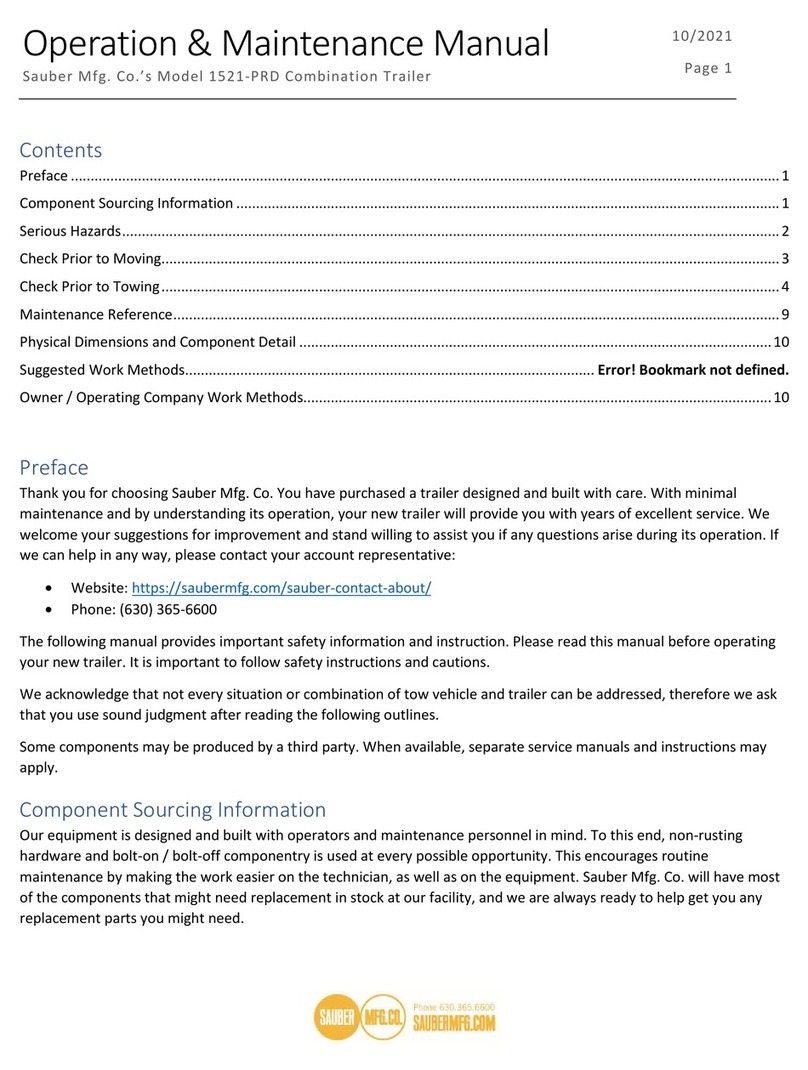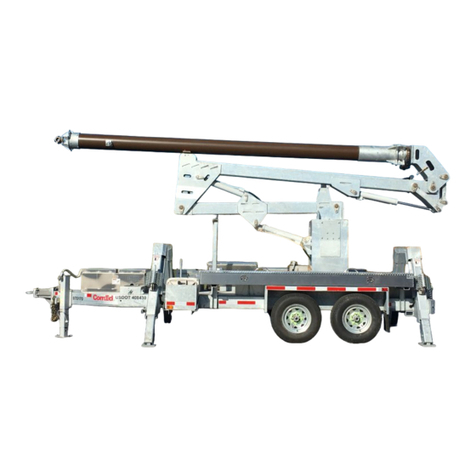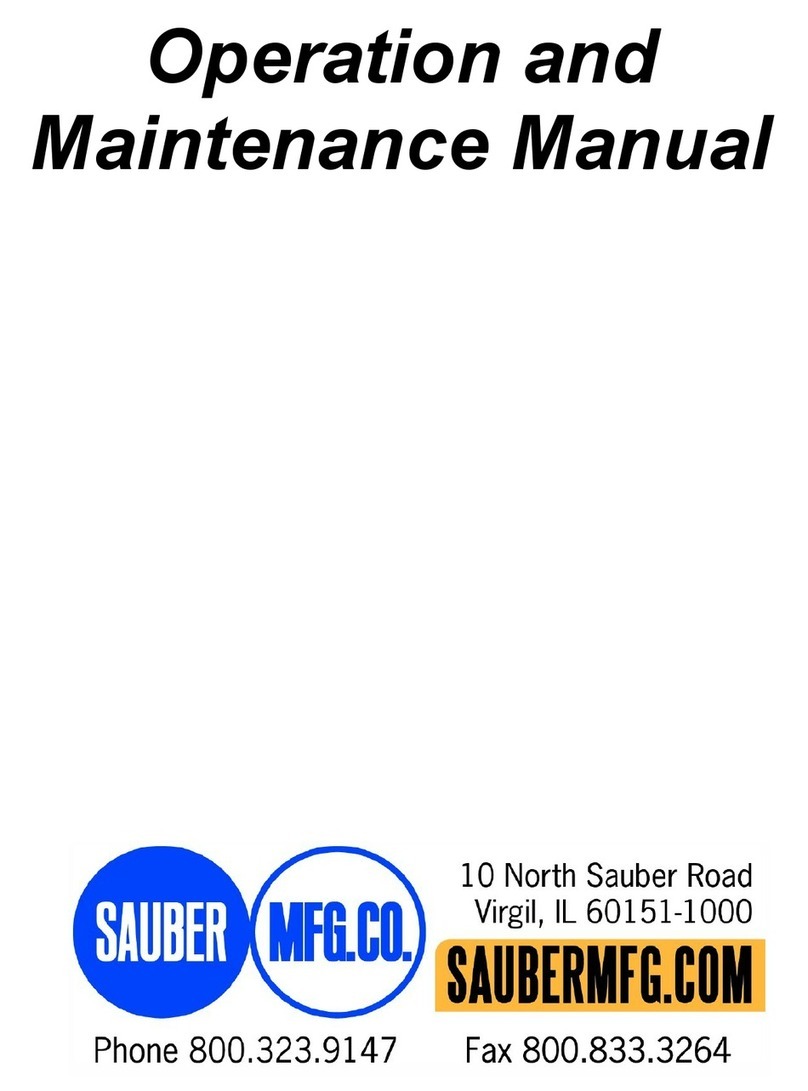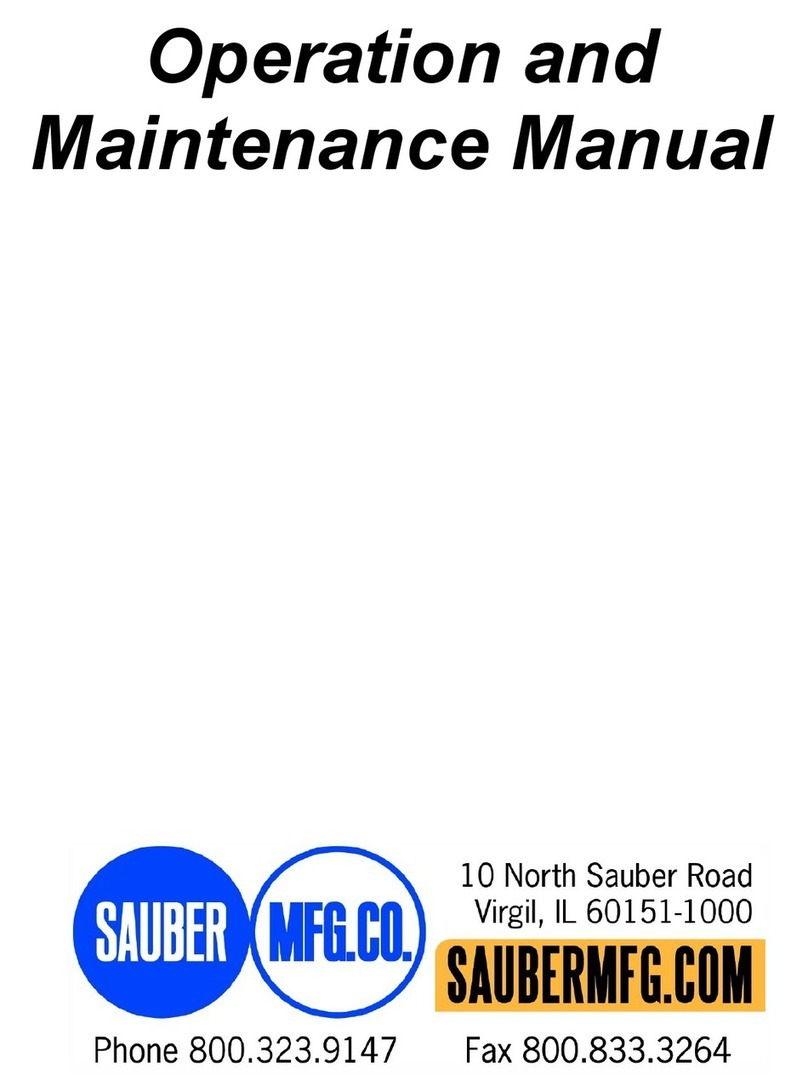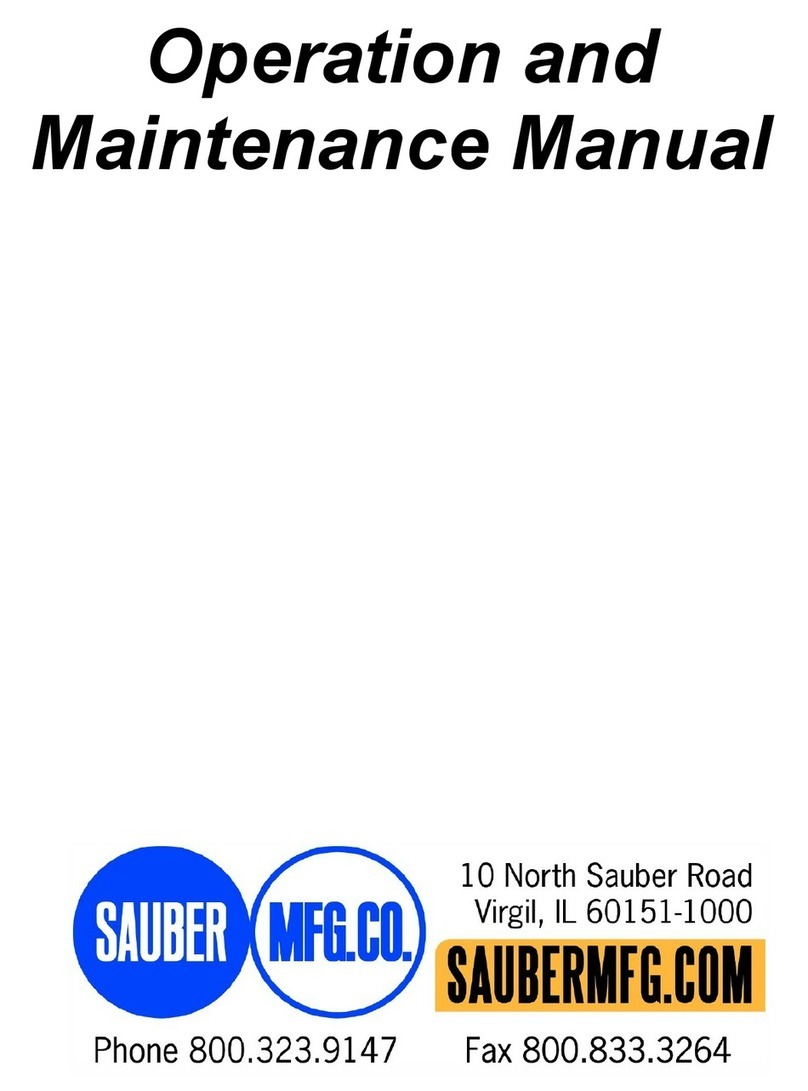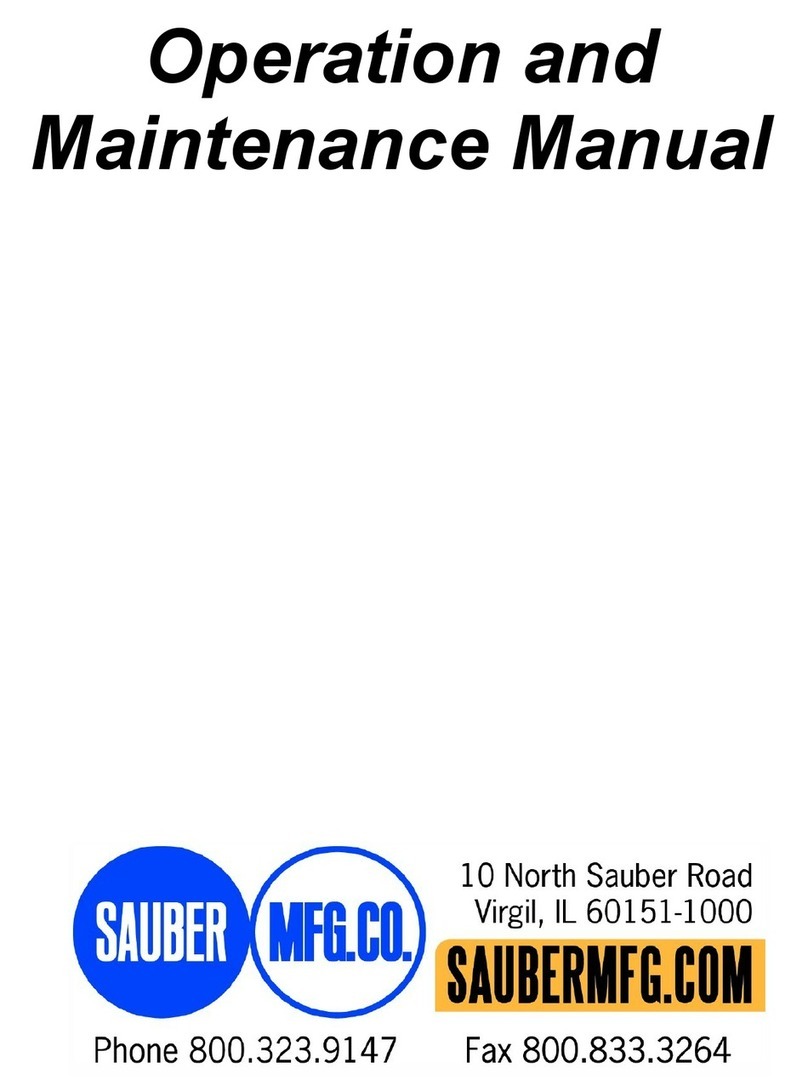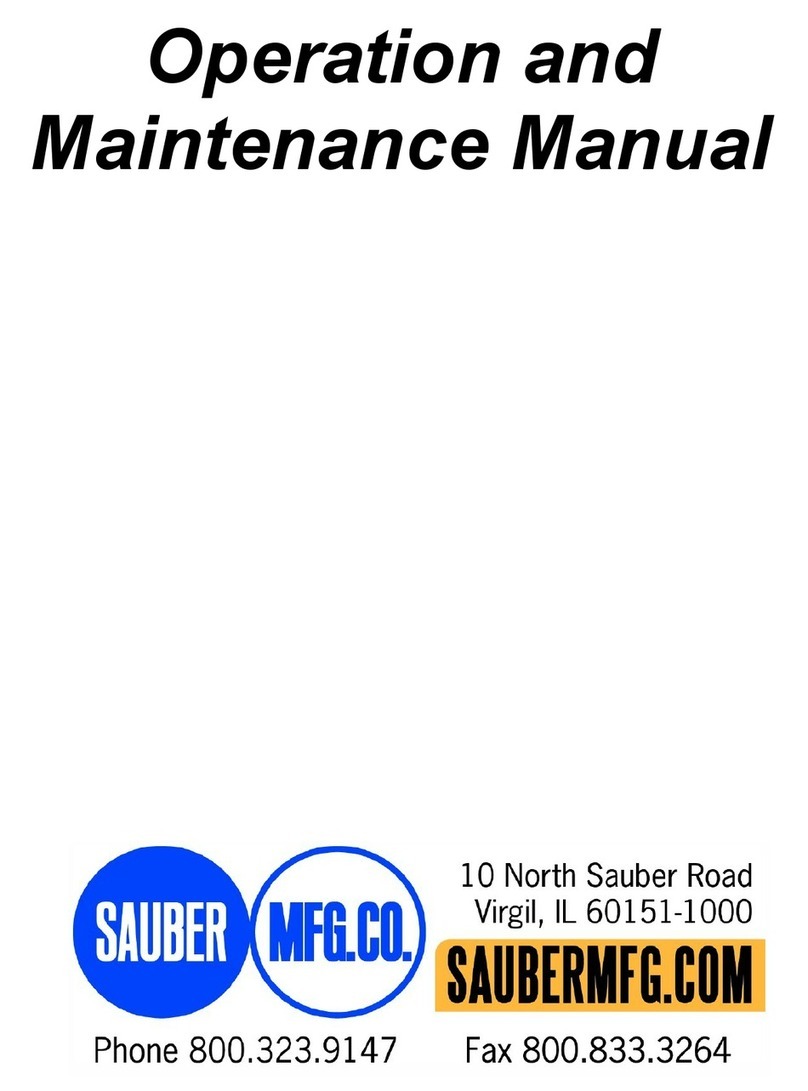
This information is the property of Sauber Mfg. Co. and is intended for customer use only.
Operation & Maintenance Manual
Model 1580-TBA Tilt-Bed Trailer
07/2017
Page 3
Improper braking and steering under sway conditions
When towing a trailer, you will have decreased acceleration, increased stopping distance, and increased turning
radius. The trailer will change the handling characteristics of your towing vehicle, making it more sensitive to
steering inputs and more likely to be have its stability affected in windy conditions or when passed by large vehi-
cles. You will also need to adjust driving accordingly, i.e. taking a longer distance to pass and allowing for in-
creased braking distances, etc.
Common sense measures may be necessary, such as; being alert for slippery conditions, anticipate trailer sway
and be ready to reduce speed, use small, trim-like steering adjustments to re-gain control, check rear view mirrors
frequently to evaluate trailer towing and traffic conditions, use a lower gear when driving downhill or on long
grades, be aware of your trailer height at all times, especially when approaching bridges and roofed areas.
Improper or incorrect coupling of the trailer to the hitch
It is critical that the trailer be securely coupled to the hitch, and that the safety chains and emergency break-away
cable (electric brakes) and air hoses (air brakes) are correctly attached. Uncoupling of the trailer during transit can
lead to a serious accident or a fatality.
Ensure that the pintle hook capacity rating, including installation, is sufficient for the GVWR and the tongue weight
of the trailer being towed. Make sure that the pintle hook is physically compatible with the trailer drawbar. Compat-
ibility information is available from the pintle hook manufacturer.
Observe the drawbar and pintle hook for wear, corrosion and cracks before coupling. Replace worn, cracked or
corroded components per the manufacturer's recommendations.
Ensure the hitch drawbar and pintle hook are installed with grade-8 fasteners and are properly torqued before
coupling to the tow vehicle.
Do not move the trailer if any of the following conditions appear:
• The drawbar is not secured and locked to the pintle hook.
• The safety chains are not secured to the tow vehicle. If your trailer detaches from the pintle hook for
any reason, we have provided safety chains so that control of the trailer can still be maintained. Im-
proper rigging of the safety chains could result in loss of control. Fasten chains to the frame of the
towing vehicle. Do not fasten chains to any part of the hitch unless the hitch has special holes or
loops specifically designed for that purpose. Cross chains underneath hitch and coupler with enough
slack to permit turning and to suspend the trailer tongue should it become detached.
• The trailer jacks are not fully retracted.
Do not tow the trailer on the road until:
• Tires and wheels are checked






